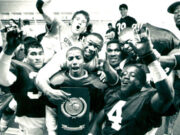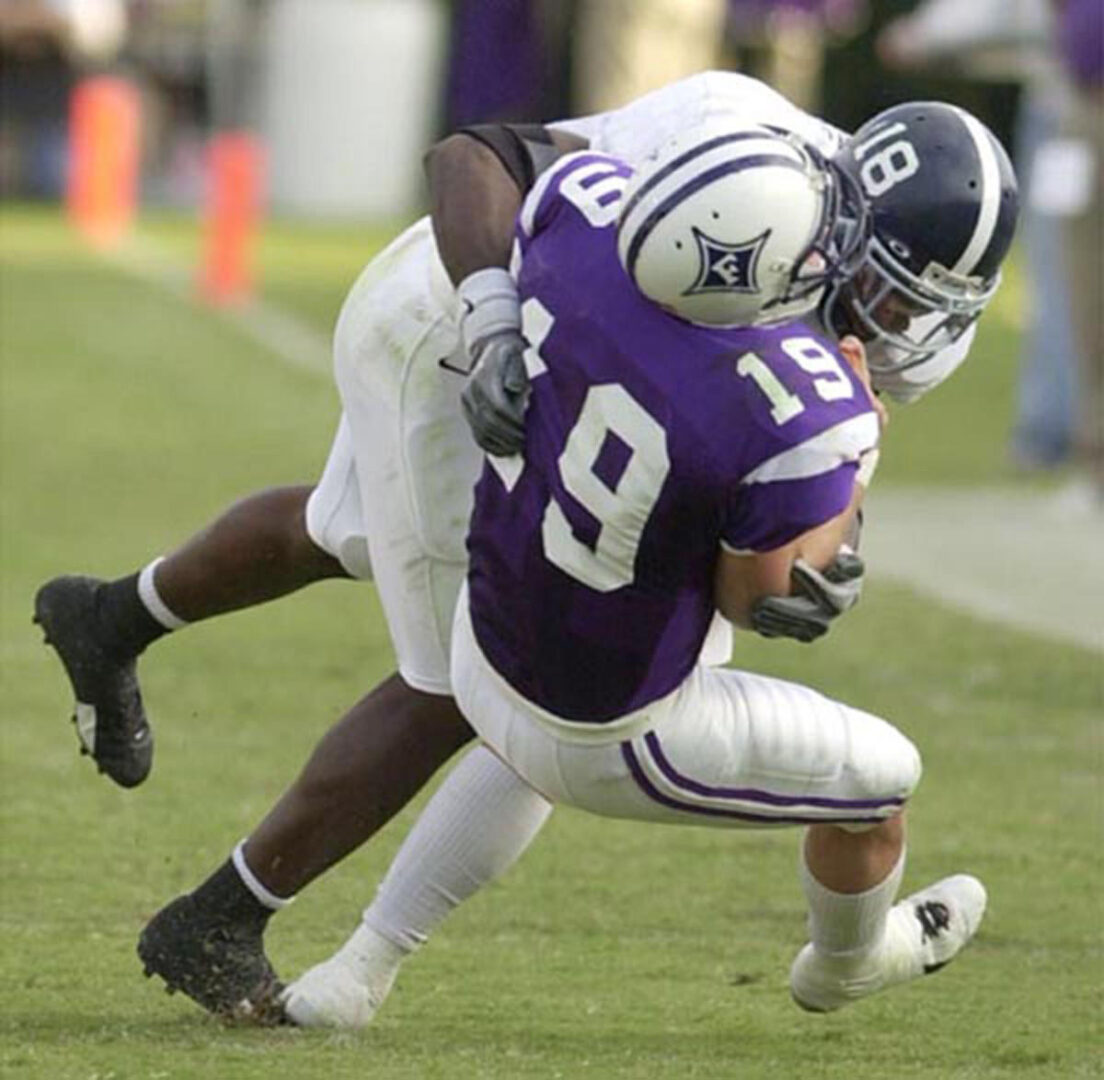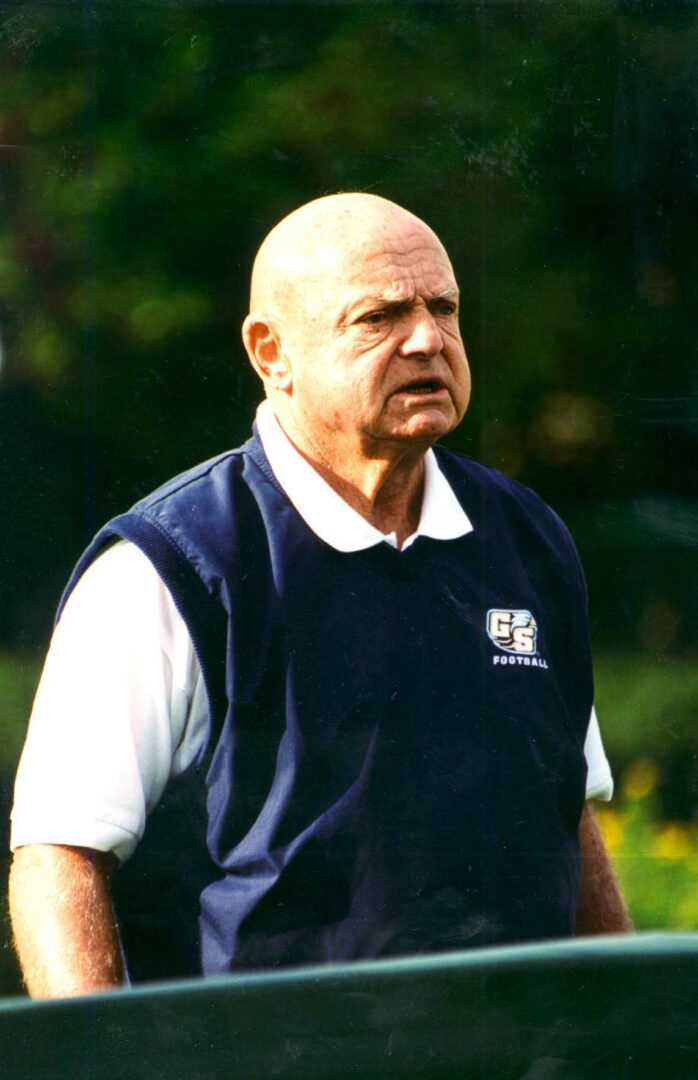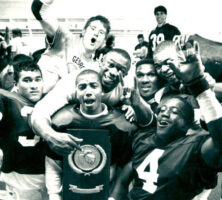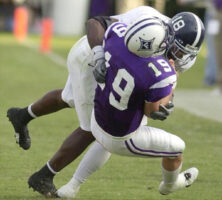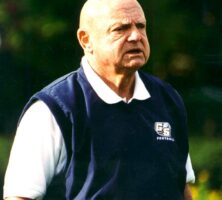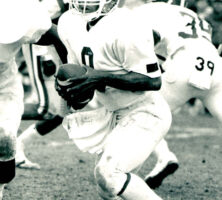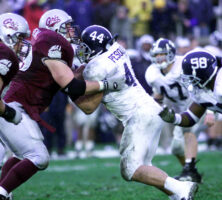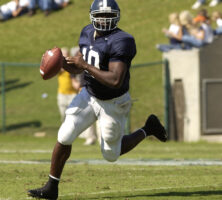The Georgia Southern Eagles are the most successful program in the history of National Collegiate Athletic Association (NCAA) I-AA football, winning six national championships between 1985 and 2000. Georgia Southern University, located in Statesboro, and the surrounding community have both benefited from the team’s success.
The Return of Football
From 1924 to 1941 Georgia Southern had a football team called the Blue Tide. They managed just four winning seasons in those seventeen years. After the 1941 season, a majority of the players signed up for military service after the Japanese attack on Pearl Harbor, which marked the U.S. entry into World War II (1941-45). After the war, the college resurrected many sports, but football was not one of them.
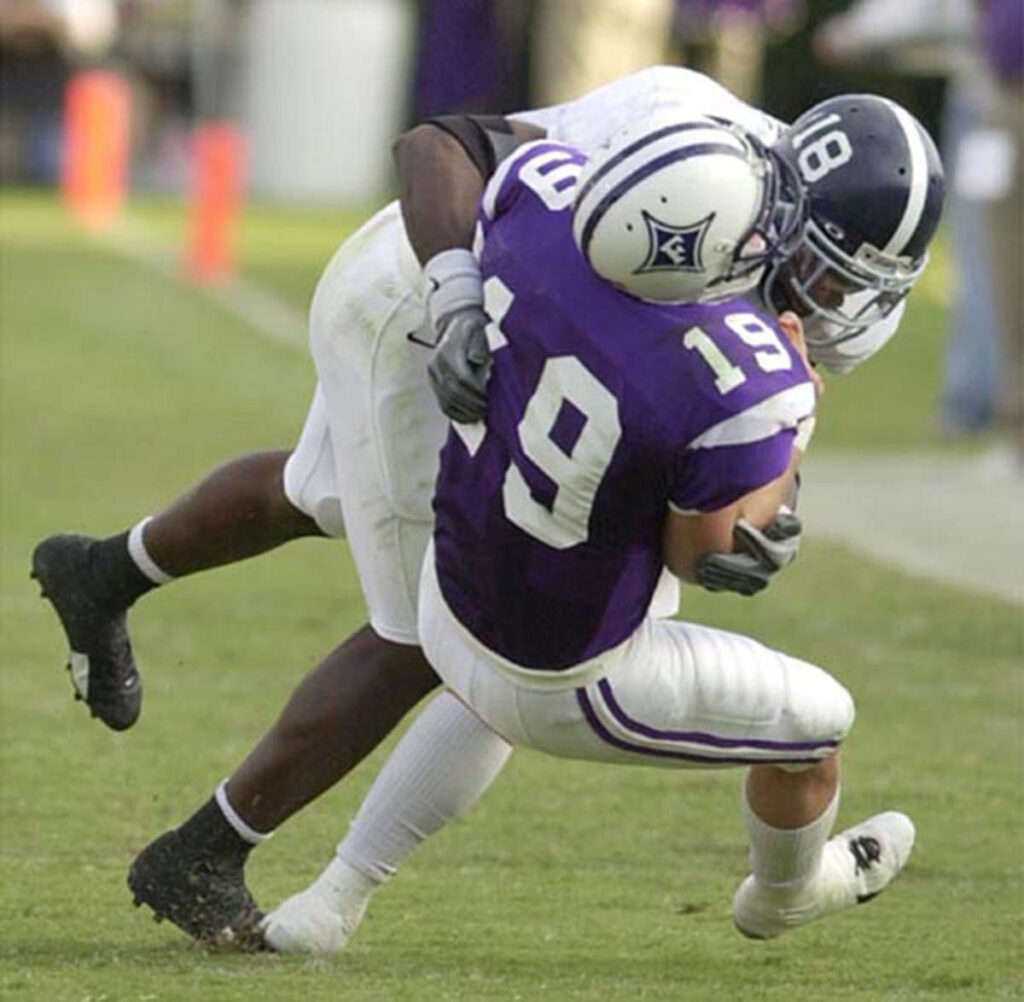
Courtesy of Georgia Southern Athletic Media Relations
When Dale Lick became president of the college in 1978, he was intent on bestowing the school’s new nickname, the Eagles, on a football team. Both the faculty and the Statesboro community were ambivalent to the proposal. On April 9, 1981, Lick decided to start an intercollegiate football program and begin playing in the fall. “There is something about football that really gets people moving in the South,” said Lick. “Georgia Southern needed football, and when I realized that, the answer was easy.” Now all the Eagles lacked were a division, football equipment, uniforms, players, and, most importantly, a coach.
Erskine “Erk” Russell, Lick’s first choice for head coach, had just won a national championship in 1980 as defensive coordinator for the University of Georgia football team, a position he had held for seventeen years. To the surprise of many, Russell jumped at the opportunity to “start literally with nothing, and to see what could be done” at Georgia Southern. Bucky Wagner, the athletic director, and Ric Mandes, the director of institutional development, helped put together the football program. Area colleges and high schools provided secondhand equipment, and the community also donated money. Allen Paulson, founder of Gulfstream Aerospace Corporation, donated $1.3 million toward a new stadium. The Eagles players were all homegrown walk-ons (or nonscholarship players). They competed against club teams at Statesboro High School for their first three years, to moderate success.
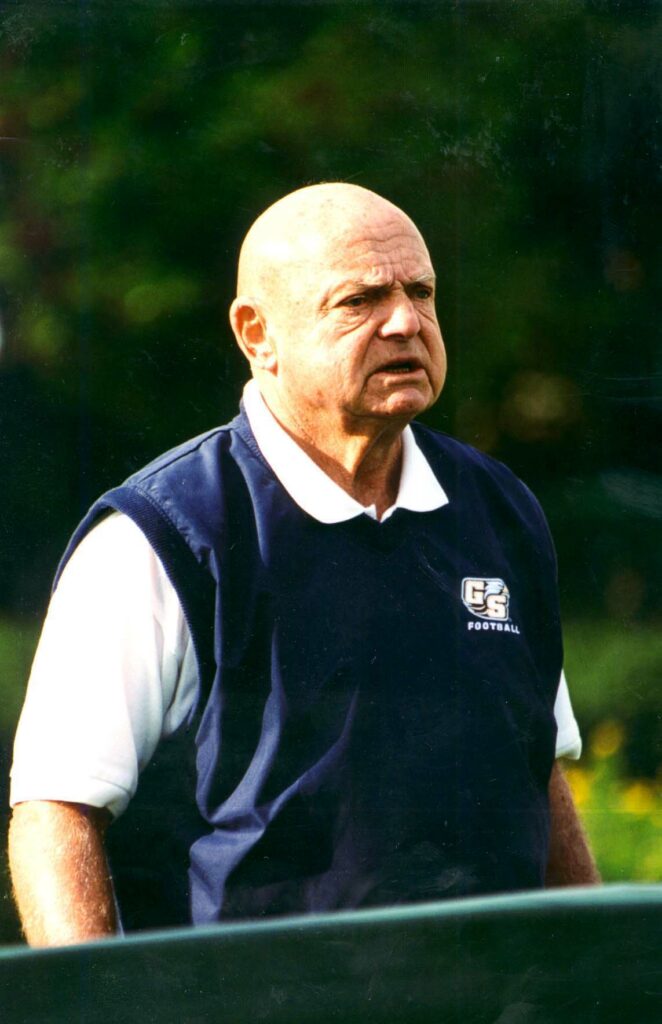
Courtesy of Georgia Southern Athletic Media Relations
Russell’s Legacy
Russell’s strategies at Georgia Southern brought the team success. He was a creative recruiter, signing players that were overlooked by larger schools. Russell’s teams also became known for their wide-open, high-energy styles of offense, rather than for their defense. Russell also had a knack for finding transcendent players who could almost single-handedly win championships. The Eagles would continue these trends even after Russell retired.
The career of all-American quarterback Tracy Ham exemplified Russell’s approach. Despite being an outstanding quarterback during his high school years in Florida, Ham was recruited by other schools as a defensive back. Georgia Southern took a chance on him as a quarterback, and the “Ham-bone” offense was born. Essentially a variation on the wishbone, the game plan revolved around Ham’s ability to pass on the run or to utilize his speed to get downfield on foot. The offense averaged 41.3 points and 500 yards per game. Most importantly Ham lead the Eagles to championships in 1985 and 1986, gaining nearly 1,000 yards and scoring ten touchdowns in the two title games. He is the only player in college football history to rush for more than 3,000 yards and pass for more than 5,000 in a career.
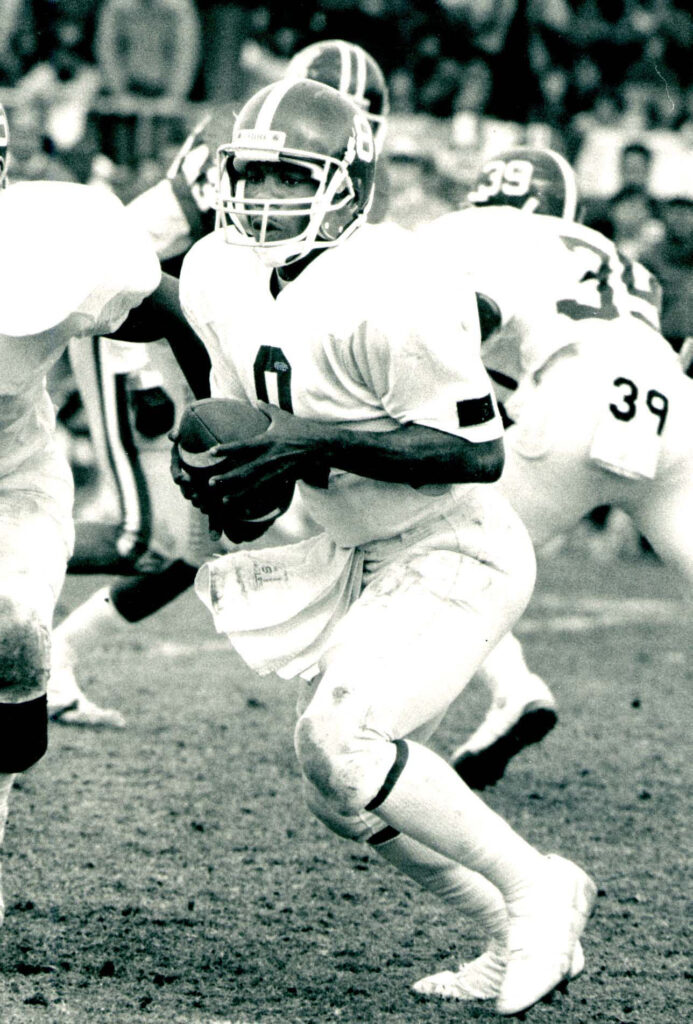
Courtesy of Georgia Southern Athletic Media Relations
Bookend Championships
The Eagles began and ended the 1990s with back-to-back championships, winning in 1989, 1990, 1999, and 2000. The 1989 squad was lead by all-American quarterback Raymond Gross. That team dominated the season, recording fifteen wins and no losses. The 1989 team was also the last to be coached by Russell, who at age sixty-three finished his career at Georgia Southern with an 83-22-1 overall record. His teams averaged an astounding 10.4 wins per year against I-AA competition.
New coach Tim Stowers won a championship in 1990 with many of the same players from the 1989 team. Under head coach Paul Johnson, who took over in 1996, Georgia Southern returned to dominance with Adrian Peterson, the all-time leading rusher in I-AA history. Like Tracy Ham, he saved his best for the play-offs, averaging 171 yards rushing in postseason games. In 1999 he won the Walter Payton Award as the I-AA player of the year. He also gained national attention for his NCAA record of forty-eight straight games with at least 100 yards rushing, failing to attain that total only once in his career.
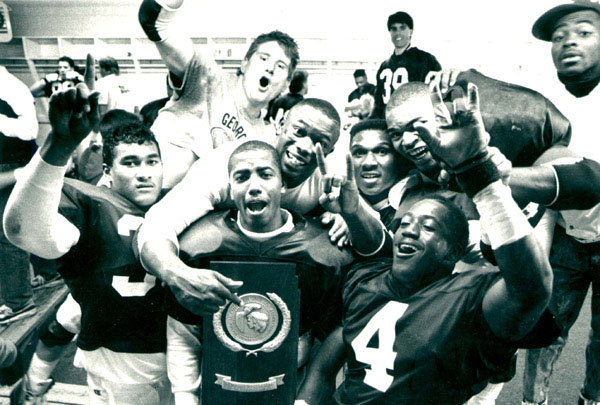
Courtesy of Georgia Southern Athletic Media Relations
The Lasting Impact of Georgia Southern Football
Although small-time football programs generally do not make money, when successful, they can enhance a school’s marketability, boost enrollment, and help raise funds. Georgia Southern has name recognition that many other schools of comparable size do not enjoy. When Russell arrived, Georgia Southern’s enrollment was stagnant at about 6,000. By the time he retired, it had doubled. In 2014, enrollment was 20,542, the sixth largest in Georgia. The team’s home games also generate substantial revenue for both the university and the Statesboro community.


